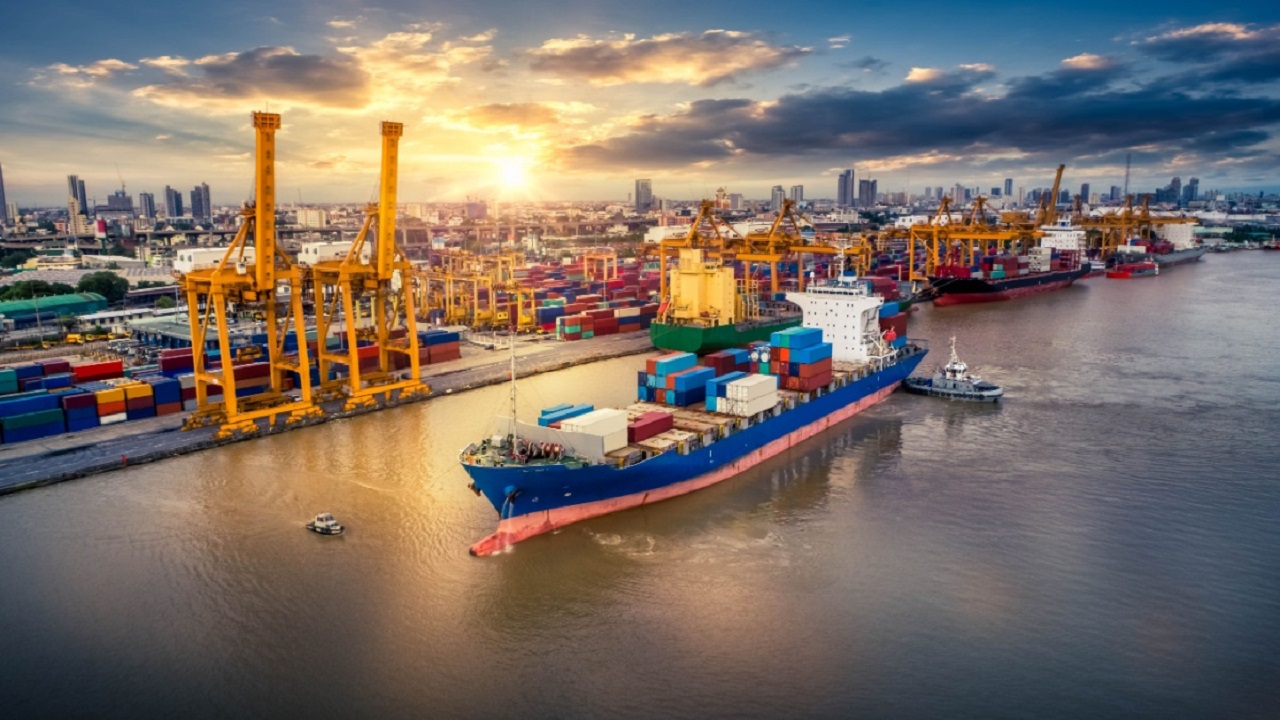Global Shipping's Green Turn: India’s Strategic Response
Context:
The global maritime sector, responsible for nearly 3% of global greenhouse gas emissions, is undergoing a major shift to achieve net-zero emissions by 2040–2050. This involves transitioning from conventional fuels like Very Low Sulphur Fuel Oil (VLSFO), diesel, and LNG, to green fuels such as green ammonia, e-methanol, and biofuels.
This shift presents a strategic opportunity for India to emerge as a producer, exporter, and user of green marine fuels.
Green Fuel Production and India’s Potential
-
Green hydrogen is produced using electrolysis of water powered by renewable energy.
-
In shipping, more stable and energy-dense alternatives are preferred:
-
Green Ammonia – derived from green hydrogen and nitrogen.
-
Green Methanol – produced using green hydrogen and captured industrial CO₂.
-
-
India is promoting green ammonia as part of its strategy to reduce LNG imports, especially in fertiliser manufacturing.
Green Methanol: A Preferred Transition Fuel in Shipping
-
Green methanol is gaining preference due to:
-
Ease of handling.
-
Lower emissions – around 10% of emissions compared to conventional fuels.
-
-
It is more practical than green ammonia as it requires minimal engine modification.
-
Over 360 methanol-capable ships are operational or under construction, backed by major companies like Maersk, CMA CGM, and Evergreen.
Cost and Supply Constraints of Green Methanol
-
Green e-methanol costs about $1,950 per tonne in Singapore (as of Feb 2025), while VLSFO costs around $560 per tonne.
-
High costs are due to:
-
High energy requirement: 10–11 MWh per tonne of methanol.
-
Capital-intensive infrastructure for electrolysers.
-
-
Demand is expected to reach 14 million tonnes by 2028, but supply may fall short at 11 million tonnes, increasing price pressures.
India’s Strategy for Shipping Decarbonisation
-
India is working to decarbonise domestic shipping by:
-
Promoting green fuels for container vessels.
-
Establishing green fuel bunkering hubs at Tuticorin (VOC Port) and Kandla.
-
-
Plans include exporting green fuels to Singapore, which handles 25% of the world’s ship refuelling needs.
-
With a strong base in solar energy and industrial capacity, India aims to become a global hub for green marine fuels.
Challenges in Building India’s Green Marine Fuel Ecosystem
-
India is currently dependent on imported electrolysers and solar panels.
-
However, India’s solar capacity grew from 2.82 GW (2014) to 105 GW (2025), showing the effectiveness of sovereign guarantees and policy support.
-
Key measures needed:
-
Sovereign guarantees for cheaper international financing.
-
PLI schemes for electrolyser manufacturing.
-
Incentives for Carbon Capture, Utilisation and Storage (CCUS).
-
Investment in industrial CO₂ sourcing and localised supply chains.
-
-
Multilateral development banks offering loans at 4% interest (vs 11–12% from Indian lenders) can reduce project financing costs.
Reviving Indian Shipbuilding through Green Fuel Integration
-
India is promoting foreign collaborations in shipbuilding, especially with South Korea and Japan.
-
Focus:
-
Building new vessels compatible with green fuels.
-
Retrofitting existing ships.
-
-
India has allocated $10 billion to procure 110 ships, with 10–20% planned to be:
-
Green fuel-capable.
-
Built in Indian shipyards.
-
Flying the Indian flag.
-
-
This aligns domestic shipbuilding with global decarbonisation efforts.




Comments (0)